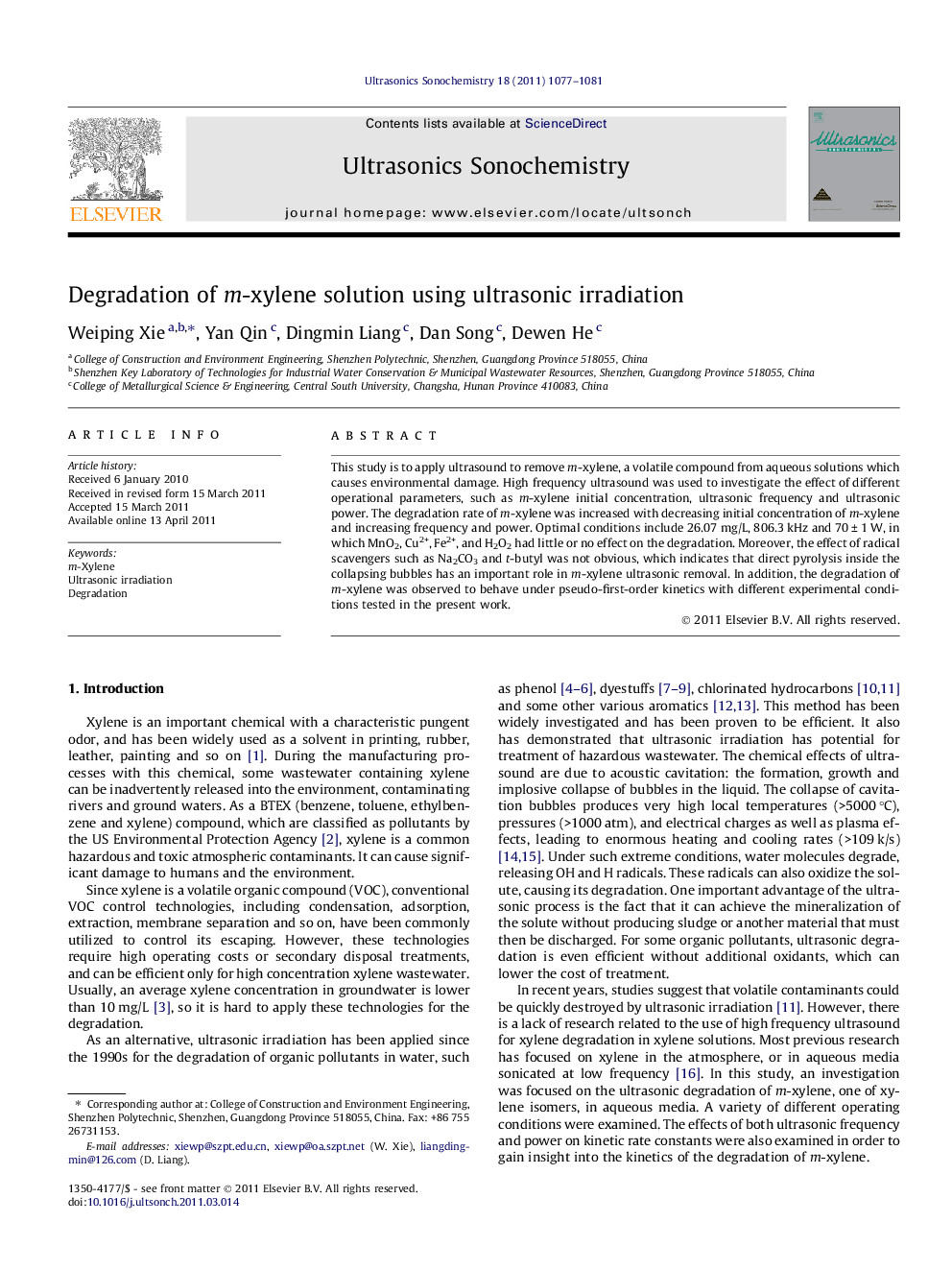| Article ID | Journal | Published Year | Pages | File Type |
|---|---|---|---|---|
| 1266990 | Ultrasonics Sonochemistry | 2011 | 5 Pages |
This study is to apply ultrasound to remove m-xylene, a volatile compound from aqueous solutions which causes environmental damage. High frequency ultrasound was used to investigate the effect of different operational parameters, such as m-xylene initial concentration, ultrasonic frequency and ultrasonic power. The degradation rate of m-xylene was increased with decreasing initial concentration of m-xylene and increasing frequency and power. Optimal conditions include 26.07 mg/L, 806.3 kHz and 70 ± 1 W, in which MnO2, Cu2+, Fe2+, and H2O2 had little or no effect on the degradation. Moreover, the effect of radical scavengers such as Na2CO3 and t-butyl was not obvious, which indicates that direct pyrolysis inside the collapsing bubbles has an important role in m-xylene ultrasonic removal. In addition, the degradation of m-xylene was observed to behave under pseudo-first-order kinetics with different experimental conditions tested in the present work.
► High frequency ultrasound was used to degrade m-xylene. ► Direct pyrolysis was the key way to degrade the m-xylene. ► Ultrasonic degradation of m-xylene follows pseudo-first-order reaction kinetics.
